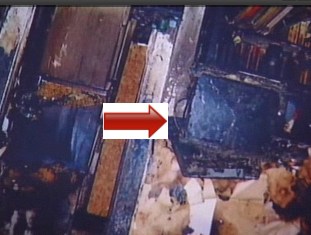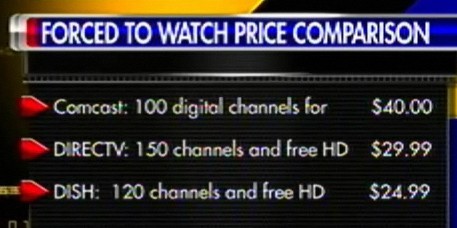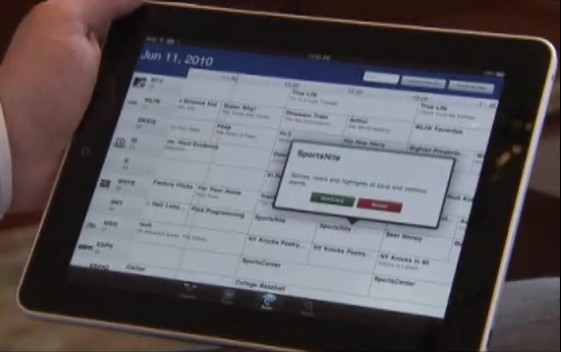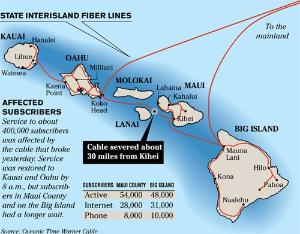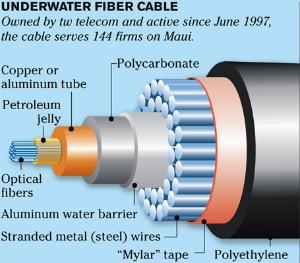
Anita Brown (left) watches as a January fire took everything she owned, including her two beloved cats.
A Reno, Nevada woman has learned that even after a disaster, Charter Cable wants their money and will stop at nothing to get it, even if it means holding your personal e-mail hostage.
Anita Brown lost everything in January after a tragic fire, started by another tenant in her building who left a candle burning unattended. While she watched nearby as all of her possessions burned in the fire, her only thoughts were for her two companions — her beloved cats.
They didn’t survive the fire. Neither did a cable box, phone jack and broadband modem belonging to Charter Cable.
As Brown tried to contemplate starting her life all over again, the cable company found out about the fire and began demanding their equipment back.
Brown was stunned to find the local cable company so insistent about the matter, so she showed them a picture they requested of the “modern art” her cable box now resembled. It literally melted in the fire. She also presented the cable company with a copy of the fire marshal’s report showing the fire was not her fault.
 Charter’s response? Pay us $1,000 immediately for the damaged equipment or else.
Charter’s response? Pay us $1,000 immediately for the damaged equipment or else.
Brown, who faced replacing every article of clothing she owned and locating a new place to live had other priorities for her dwindling financial resources. Still, she offered to make monthly payments to cover the loss, if only to avoid Charter’s collection department and damage to her credit. They told her someone would be in touch.
That someone was a Charter technician who turned up a week later to disconnect her relocated cable service. A payment of $25 made him go away, service intact. A week later, while she was attending a family funeral, a technician returned and disconnected service anyway. Then the bills started arriving.
Charter had subsequently reduced the amount owed for the damaged equipment to $500, still out of reach financially for the Reno woman. She signed up with another provider. Meanwhile, Charter keeps sending her bills demanding payment and Brown worries they’re on the verge of trashing her credit.
A local Reno television station reporting on Brown’s plight found Charter’s local employees less than helpful, refusing to work out a solution to the cable nightmare. A national media representative for Charter was sympathetic, however, and the company may find its way to a mutually acceptable resolution soon.
It can’t come soon enough for Brown, who isn’t even sure she should owe a penny for a box burned in a fire she didn’t start.
Even worse, the only contact list of friends and family Brown has left is locked up in her e-mail box, now held hostage by Charter Cable, who refuses to let her access it until her current bill is settled -and- she promises to stay with Charter Cable.
Cable customers often discover they are on the hook for lost or damaged company-owned equipment. Most cable company subscriber agreements hold customers responsible for replacement or repair costs for returnable equipment.
Stop the Cap! strongly recommends consumers obtain a signature or receipt when returning cable equipment and hang onto it at least six months after disconnecting service. That evidence will save you hundreds of dollars in case the company claims you didn’t return equipment. With today’s digital cable requiring set top boxes, many homes have several. The cost of replacing all of them could become astronomical.
If you rent, purchasing inexpensive renter’s insurance is a must to protect your possessions. Your landlord insures the building you live in, not the things inside your apartment. Many homeowner and rental insurance policies cover damaged cable equipment in case of a fire or other natural disaster. Ask your insurance agent to check your coverage.
After a loss, don’t forget to claim the value of that equipment so you can reimburse cable companies that do not forgive these types of losses.
As for Brown, she is still waiting to find out if Charter has a heart. The damage stories like this do to a company’s reputation may carry a price higher than the cost of the cable box. Some Reno viewers saw the story and are taking their business elsewhere.
“Thanks for the heads up. We just moved here, and are weighing our cable/satellite options,” writes Diana from Sparks. “That makes my decision a bit easier.”
Kelly in Reno added, “Sounds about right for Charter – big corporate, heartless, money-sucking [profanity deleted]! What do they think is going to happen if they just void this bill, that everyone will start burning down their houses to get out of paying for equipment? Come on, have a heart Charter!”
[flv]http://www.phillipdampier.com/video/KOLO Reno Charter Cable Pursues Fire Victim 9-11-10.flv[/flv]
KOLO-TV in Reno told Brown’s story. The ironic part of this story is that an advertisement preceding the clip was from none other than… Charter Cable. (1 minute)


 Subscribe
Subscribe